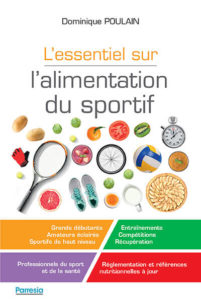Rôle du Lycopène dans la limitation du stress oxydatif après un effort musculaire
Lycopène supplementation attenuated xanthine oxidase and myeloperoxidase
activities in skeletal muscle tissues of rats after exhaustive exercise.
Auteur(s): Liu C.-C., Huang C.-C., Lin W.-T., Hsieh C.-C., Huang S.-Y., Lin S.-J., Yang S.-C.
Réf.: Br J Nutr. 2005 Oct ; 94(4) : 595-601.
Adresse: Department of Physical Education, Yuan Pei University of Science and Technology, Hsin Chu, Taiwan.
Mots clés: …
Résumé : Strenuous exercise is known to induce oxidative stress leading to the generation of free radicals. The purpose of the present study was to investigate the effects of lycopene, an antioxidant nutrient, at a relatively low dose (2.6 mg/kg per d) and a relatively high dose (7.8 mg/kg per d) on the antioxidant status of blood and skeletal muscle tissues in rats after exhaustive exercise. Rats were divided into six groups: sedentary control (C); sedentary control with low-dose lycopene (CLL); sedentary control with high-dose lycopene (CHL); exhaustive exercise (E); exhaustive exercise with low-dose lycopene (ELL); exhaustive exercise with high-dose lycopene (EHL). After 30 d, the rats in the three C groups were killed without exercise, but the rats in the three E groups were killed immediately after an exhaustive running test on a motorised treadmill.
Results showed that xanthine oxidase (XO) activities of plasma and muscle, and muscular myeloperoxidase (MPO) activity in group E were significantly increased compared with group C. Compared with group E, the elevations of XO and MPO activities of muscle were significantly decreased in group EHL. The malondialdehyde concentrations of plasma and tissues in group E were significantly increased by 72 and 114 %, respectively, compared with those in group C. However, this phenomenon was prevented in rats of the ELL and EHL groups. There was no significant difference in the GSH concentrations of erythrocytes in each group; however, exhaustive exercise resulted in a significant decrease in the GSH content of muscle.
Conclusion: these results suggested that Lycopène protected muscle tissue from oxidative stress after exhaustive exercise.
Fiche Pratique
Lycopène ? Peut-être ; Tomate ? Sans aucun doute. (Pdf, 1 page, 1,57 Mo).
Source : www.aprifel.com
Santé et Performance

Notre Société savante a pour mission de promouvoir la Nutrition du sport, dans un objectif de protection de la santé, de recherche de performance, et de prévention des conduites addictives.
Nous proposons des colloques et des journées de formation, fondés sur une actualisation des connaissances scientifiques...
> Santé et Performance

